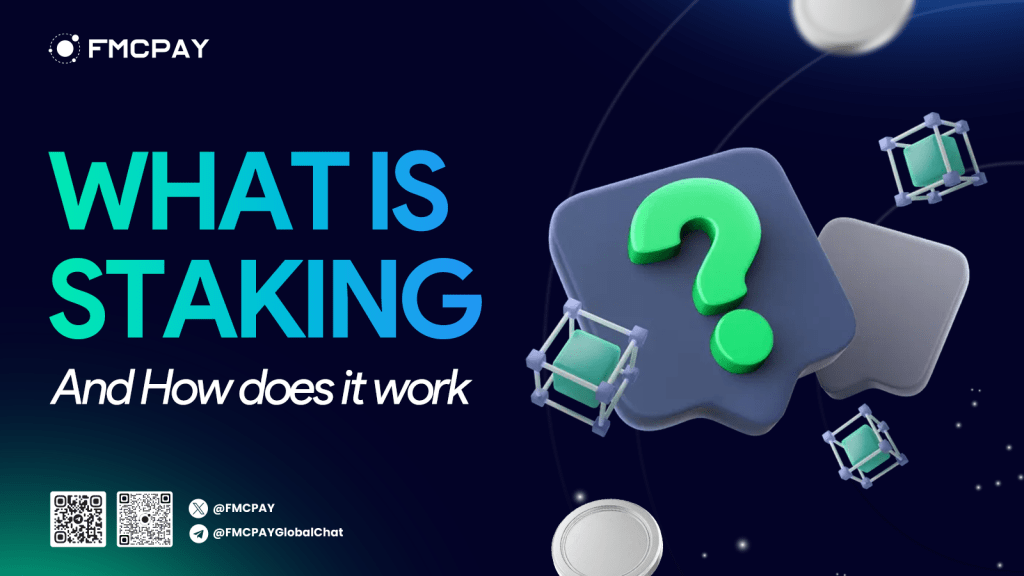What is staking work in crypto? In simple terms, staking involves using your crypto assets to validate transactions and maintain the integrity of a blockchain network. This process is commonly associated with cryptocurrencies that operate on the proof-of-stake method, which is considered more energy-efficient compared to the traditional proof-of-work approach.
Unlike proof-of-work, where mining devices use computational power to solve complex mathematical problems, proof-of-stake relies on participants staking their cryptocurrency as collateral.
Staking can be an attractive way to generate passive income, especially since certain cryptocurrencies offer substantial interest rates for staking. However, it’s crucial to have a clear understanding of how crypto staking works before diving in.
In 2024, will staking comeback with various projects that bring users huge income opportunities?
Staking Cheat Sheet 2024-2025#Staking Trend is coming – Don’t miss this post
1. Cosmos
Stake $ATOM , $TIA , $INJ , $OSMO, $SEI , $KUJI , $AXL , $STARS , $TIA
2. Solana
– Stake $PYTH
– Stake/Lend/Borrow $SOL on @marginfi3. Ethereum:
– Stake $ETH on:
+ @eigenlayer… pic.twitter.com/WfaByEoctw— FMCPAY (@FMCPay) January 22, 2024
How does staking work in Cypto?

Staking is a process employed by cryptocurrencies that operates on the proof-of-stake system to validate and add new transactions to the blockchain.
Here’s how it works: Participants commit their coins to the cryptocurrency protocol. The protocol then selects validators from these participants to verify blocks of transactions. The likelihood of being chosen as a validator increases with the number of coins you contribute.
As a reward for validating new blocks, validators receive newly created coins, commonly of the same type as the ones participants staked. However, some blockchains may provide rewards in a different cryptocurrency.
To engage in staking, you need to own a cryptocurrency that uses the proof-of-stake system. You can then choose the amount to stake through various popular Bitcoin exchanges. Importantly, when you stake your coins, you retain ownership, and you can unstake them later if you wish to trade or use them. Keep in mind that some cryptocurrencies may have a minimum staking period before you can unstake, so the process might take some time.
It’s worth noting that not all cryptocurrencies support staking; only those that operate on the proof-of-stake method can utilize this feature.
How do I start staking crypto?
Cryptocurrency staking may be a little complicated at first, but it’s a straightforward procedure once you get the hang of it. How to stake cryptocurrency, step by step:
Buy a cryptocurrency that uses proof of stake
Not all cryptocurrencies support staking, which involves using proof of stake to validate transactions. Here are details about a few popular staking cryptocurrencies:
- Ethereum: Initially a proof-of-work blockchain, Ethereum is transitioning to a proof-of-stake model, allowing developers to create decentralized applications.
- Cardano: Known for its eco-friendliness, Cardano is founded on peer-reviewed research and developed using evidence-based methods.
- Polkadot: Operating as a protocol, Polkadot facilitates the connection and collaboration of different blockchains.
- Solana: Engineered for scalability, Solana boasts fast transactions and low fees.
At FMCPAY Exchange, we offer various staking packs, including Fixed-term and Flexible-term Products for $USDT, $PAYN, and $FMC, providing the highest 55% Annual Percentage Yield (APY). Explore the cryptocurrencies you’re interested in and make purchases through cryptocurrency apps and exchanges.
Start your staking plan with FMCPAY here: https://fmcpay.com/stakings
Transfer your crypto to a blockchain wallet
Once you’ve purchased your cryptocurrency on the exchange, the platform where you made the purchase typically provides options for staking. In the case of certain coins, various exchanges, including FMCPAY Exchange, have their staking mechanisms. If FMCPAY Exchange supports staking for your chosen cryptocurrency, you can easily stake it on the platform.

Here’s a simple guide:
- Open your wallet and select the option to deposit cryptocurrency.
- Choose the specific cryptocurrency you wish to deposit; this will generate a wallet address.
- In your exchange account, opt for “Withdraw Crypto.”
- Copy the wallet address generated in your wallet and paste it into the withdrawal section of your exchange account.
- Confirm the transaction to transfer your cryptocurrency from the exchange to your wallet for staking.
By following these steps, you can seamlessly stake your cryptocurrency on FMCPAY Exchange or any other platform that supports staking for the chosen coin.
Join a staking pool
Staking methods can vary based on the cryptocurrency, but staking pools are a common approach, allowing cryptocurrency enthusiasts to pool their funds for increased staking rewards. Consider the following when exploring staking pools for your cryptocurrency:
- Reliability: Choose a staking pool with high server uptime to ensure you maximize your reward potential. A pool with close to 100% uptime is preferable to avoid missing out on rewards during server downtime.
- Reasonable Fees: Staking pools typically deduct a small percentage as a fee from staking rewards. Look for pools with reasonable fees, commonly ranging from 2% to 5% depending on the cryptocurrency.
- Size: The size of a staking pool matters. Smaller pools may offer more substantial rewards when chosen to validate blocks, but they can be less reliable. Larger pools may face oversaturation due to reward limitations, potentially impacting individual returns. Opting for a mid-size pool often strikes a balance between reliability and reward potential.
Once you’ve identified a suitable staking pool, stake your cryptocurrency through your wallet. It’s a straightforward process, and you’ll begin earning staking rewards.

